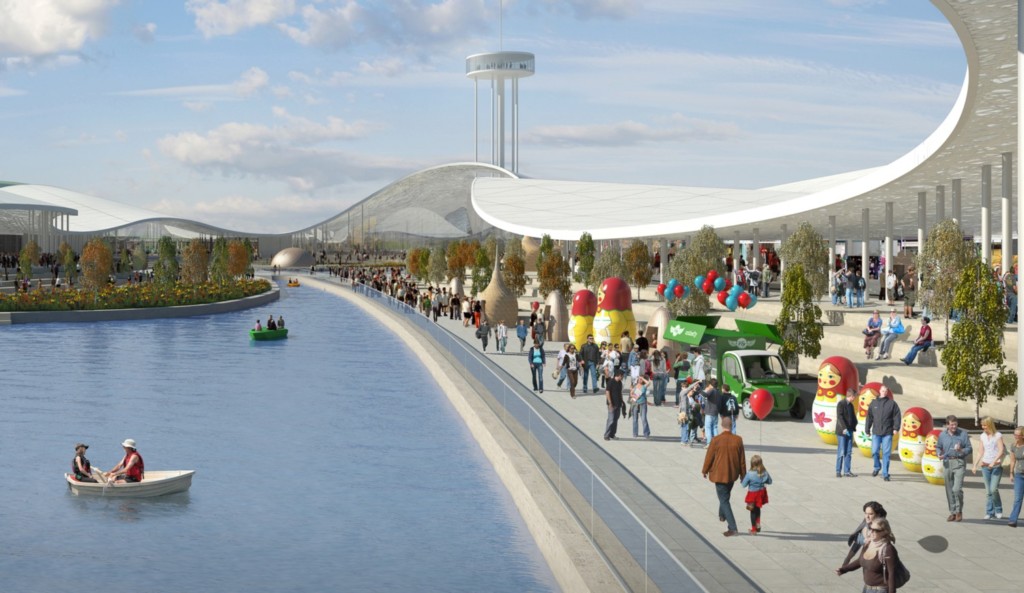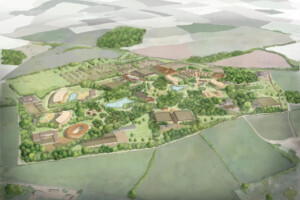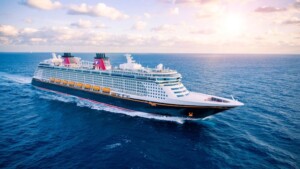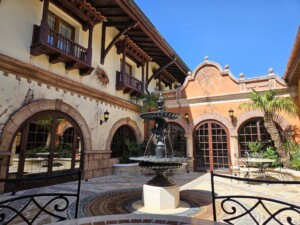Following a closely-fought international contest, work is scheduled to begin almost immediately on Park Russia; the 1000-hectare ambitious and innovative conceptual tourism and cultural project 30km south of Moscow near Domodedovo airport which will, it is estimated, draw in the region of 10 million visitors a year.
 The Contest
The Contest
A competition run by the Russia Geographic Society and Moscow Region Government to create the strategy and master-plan for Park Russia’s development was won by a consortium led by the world’s largest privately-held commercial real estate services firm, Cushman and Wakefield.
The brief provided by the Green Building Council, Russia, specified that “the competition’s purpose is to select the best conceptual, architectural and space planning solution for the creation of Park ‘Russia’… The winner’s vision for the concept and financial model of the park should fully and in an entirely convincing manner, reflect the rich natural, historical, cultural and ethnic diversity of the Russian Federation. It should portray the unique identity of the regions represented in cultural and historical terms in context to the Park’s overall design, covered by the masterplanning space-planning, landscaping and economic aspects of each of the park’s integral elements.”
Winning Consortium
The winning consortium’s proposal combined financial acumen, green objectives, real-world pragmatism and a compelling creative vision, providing a business strategy and masterplan showcasing three main park zones and demonstrating opportunities for private investment in leisure projects.
The Park is set to open in 2016 but will, according to the winning consortium’s business plan, continue to develop and evolve flexibly over the next twelve years. Cushman & Wakefield demonstrated how viable development projects could be marketed to the private sector in a business plan that incorporates private investors.
A ‘green’ transport strategy has been integrated into the design, which has environmental concerns and sustainable design at its core. The rail and road plan was developed by consortium members Buro Happold. Rail access from Moscow and Domodedovo will be optimised to cope with the large numbers expected, providing for future economic and infrastructure growth.
The consortium’s master plan included the development of a resort destination, and a theme park comprising three main zones, drawing on Russia’s history, cultural legacy and future plans.
The most influential players at this first stage were Gillespies and Fourth Street. Gillespies produced the masterplan and Fourth Street worked closely with them on the economic and business strategy – a key area of the submission that the judges determined was very well developed.
Gillespies partner Jim Diggle, who led the team, said: “Park Russia features an inspiring and compelling design vision. It has been designed to be delivered flexibly over many years. It will be an unforgettable destination based on multiple and complimentary attractions offering layers of interest with fun and learning experiences for all.”

Subverting the Theme-Park Form
Elements of Park Russia will include a waterpark, botanical gardens, a safari park, the amusement park, a circus, an exhibition centre, a race track, a golf course, a concert hall, a cinema, a hotel, and residential and shopping facilities.
 A key part of the project will be a miniature replica of Russia and its regions, together with city craftsmen and various museums.
A key part of the project will be a miniature replica of Russia and its regions, together with city craftsmen and various museums.
French Puy du Fou and Swiss Maxmakers made compelling and impressive contributions to the park elements.
Maxmakers has a specific focus on all entertainment components in the consortium, and the Russia Legends Park conceived by Puy du Fou was very influential part of the bid, presenting theatrical re-enactments of great moments of Russian history.
Puy du Fou, which four years ago established an international consulting arm, have an impressive track record in subverting the theme park form in ground-breaking ways.
International Cooperation
The Cushman & Wakefield international consortium comprises Strategy Partners Group, NEBA Cultural, Terra Viva and Country Format from Russia, international masterplanners from the UK Gillespies, Buro Happold, Rider Levett Bucknall, Feilden Clegg Bradley Studios and Fourth Street Place Consultants and specialists Puy du Fou International (France), MaxMakers (Switzerland), Jack Rouse Associates (USA), Ray Hole Architects (UK), Populous (UK), and Conventional Wisdom(USA).
Ron Bunt, Vice President (Production) at Jack Rouse Associates, told Blooloop: “JRA is thrilled to have been included as part of the winning team for this innovative project. Cushman-Wakefield has assembled a world-class team and a solid development methodology for the realization of Park Russia’.
Upon its completion, Park ‘Russia’ will be a destination like none other and we look forward to turning the exciting vision for the project into a successful reality.”
Commenting on the master planning process Ray Hole, founder of ray hole architects said, “The mix of experiences conceived and integrated into the overall master plan will ensure a unique world class destination is delivered and enjoyed by those who ultimately visit.”
Project Leader Richard Tibbott FRICS of Cushman & Wakefield calls the theme park “a uniquely Russian leisure park responding to Russian consumer desires for imaginative leisure and cultural development and creating a major new destination for the rapidly growing Russian visitor economy – it will be a credible comparator to Singapore’s Gardens by the Bay and eventually to the Parks at Orlando, Florida”.

An Insider’s Perspective
Fourth Street’s Dan Anderson wrote in his blog about being part of the winning team: “…The Jury selected a shortlist of 5 consortiums, including an international team led by the Moscow office of Cushman & Wakefield, which included Fourth Street as specialist strategic and financial advisers.
This triggered an intensive period of planning, modelling and design, with vital contributions by – amongst others – Gillespies, Fielden Clegg Bradley, Buro Happold, Rider Levett Bucknall and Ray Hole Architects. In addition to working on the delivery and operational structure, Fourth Street helped to marshal all of the different design, technical and financial inputs and to articulate them in a readable, compelling and convincing bid document.
On New Year’s Eve, the client announced our consortium as the winner. The news is received with enormous pride for a job well done in 2013, but also with the anticipation and steeliness that is needed to take on such a daunting task in the year ahead.”
Later, Dan gave Blooloop a unique insight into the process.
“The challenge with any project such as this – which I typically call ‘transformational’ because of its scale – is to strike an appropriate balance between vision and delivery. It is the constant tension between ambition and execution. Focus too much on one and it might look pretty on the page, but is ultimately unviable. Focus too much on the other and it will be perceived as boring and uninspired.
The brief from the client was hugely demanding – virtually a shopping list of individual projects deemed ‘desirable’ – but, at the same time, it was insistent that anything proposed needed to be physically feasible, operationally competent, environmentally friendly and financially sound. The judges were clearly looking for a design they could love; but also for a plan they could believe.

It is telling that of the five shortlisted consortia, only ours was assembled and led by a commercial property firm (Cushman & Wakefield). The rest were all overwhelmingly design-led. Cushmans marshalled a very strong team of architects and designers, but at every stage in the process we made sure that the developing concept was firmly rooted in financial and operational realities.
In that respect, we paid particular attention to two key areas:
First, we proposed a governance and management structure based on a PPP model that is lean and fit-for-purpose, properly incentivised and capable of entering into different types of funding and management arrangements to suit the needs of particular projects. This gave them the confidence that we could raise private investment for the project that will more than match any public subsidy.
Second, we paid extraordinarily close attention to the phasing and sequencing strategy. For a project of this scale, phasing and sequencing is everything. The project needs to capture the public’s imagination early and build momentum towards the larger, riskier projects. If you try to do too much too soon or if you introduce the wrong product at the wrong time, then that momentum is reversed and it is very difficult to recover from that. So one of the pillars of our proposal was a credible ‘story’ of the project, describing how it would evolve, piece by piece, project by project – starting with small, scale low-cost projects in the early phases (e.g. ‘come and watch the garden grow’ tours) and building sequentially towards the larger, more ambitious and iconic projects in later phases. Being able to describe that evolution in a very specific and credible way helped to distinguish our team and our proposal from the rather simplistic ‘build it and people will come’ approach of our competitors.
I give a lot of credit to Richard Tibbott at Cushman’s for this success. It was a large team, with half-a-dozen different architects, two global engineering practices and a number of specialist consultancies, all dispersed across Russia, England and North America. When I arrived for the first meeting and saw a large room full of different architects, engineers and consultants, I thought, ‘this is going to be mayhem!’
But Richard somehow got everyone aligned, working to a common end and speaking in a similar language. Even now when I re-read the contest submission I would struggle to tell you who did which design or who wrote what chapter. It just looks and reads seamlessly – a single vision and a clear story. That was the real magic trick that I think ultimately won over the judges.”

Images: Gillespies LLP














